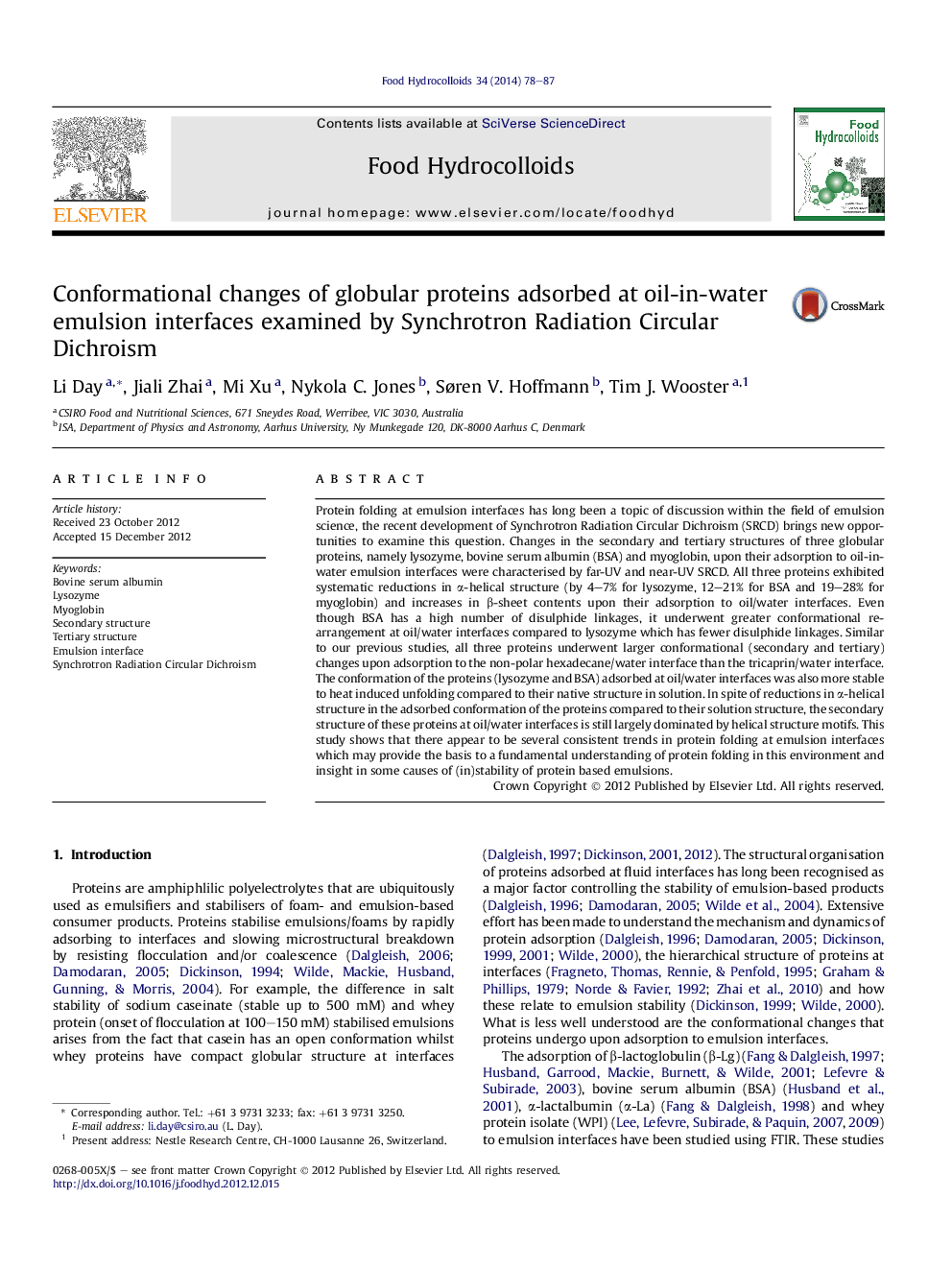| Article ID | Journal | Published Year | Pages | File Type |
|---|---|---|---|---|
| 603939 | Food Hydrocolloids | 2014 | 10 Pages |
Protein folding at emulsion interfaces has long been a topic of discussion within the field of emulsion science, the recent development of Synchrotron Radiation Circular Dichroism (SRCD) brings new opportunities to examine this question. Changes in the secondary and tertiary structures of three globular proteins, namely lysozyme, bovine serum albumin (BSA) and myoglobin, upon their adsorption to oil-in-water emulsion interfaces were characterised by far-UV and near-UV SRCD. All three proteins exhibited systematic reductions in α-helical structure (by 4–7% for lysozyme, 12–21% for BSA and 19–28% for myoglobin) and increases in β-sheet contents upon their adsorption to oil/water interfaces. Even though BSA has a high number of disulphide linkages, it underwent greater conformational re-arrangement at oil/water interfaces compared to lysozyme which has fewer disulphide linkages. Similar to our previous studies, all three proteins underwent larger conformational (secondary and tertiary) changes upon adsorption to the non-polar hexadecane/water interface than the tricaprin/water interface. The conformation of the proteins (lysozyme and BSA) adsorbed at oil/water interfaces was also more stable to heat induced unfolding compared to their native structure in solution. In spite of reductions in α-helical structure in the adsorbed conformation of the proteins compared to their solution structure, the secondary structure of these proteins at oil/water interfaces is still largely dominated by helical structure motifs. This study shows that there appear to be several consistent trends in protein folding at emulsion interfaces which may provide the basis to a fundamental understanding of protein folding in this environment and insight in some causes of (in)stability of protein based emulsions.
Graphical abstractFigure optionsDownload full-size imageDownload as PowerPoint slideHighlights► The conformations of lysozyme, BSA and myoglobin at emulsion O/W interfaces were examined by SRCD. ► Systematic reductions in α-helical structure with increases in β-sheet contents were found. ► Long span disulphide bonds appear to hinder lysozyme structural re-arrangement at interfaces. ► Larger conformational changes at hexadecane/water interface than tricaprin/water interface. ► Significant amounts of helical structure motifs retained in proteins at oil/water interfaces.
